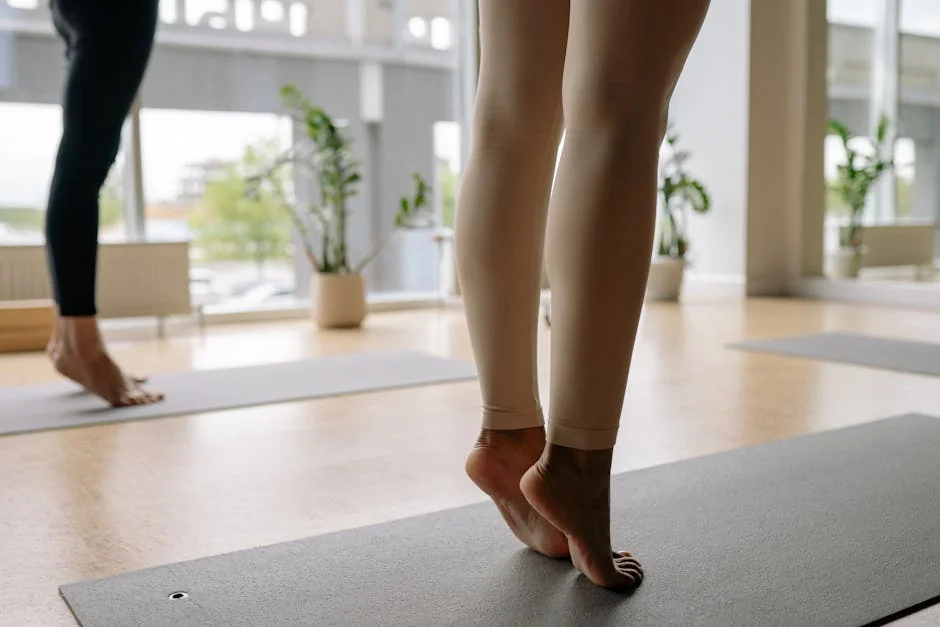In a world buzzing with notifications and endless to-do lists, the call for stillness has never been louder. From corporate boardrooms to local community centers, the search for sustainable calm is creating a powerful demand for skilled guides. This growing need has placed the mindfulness meditation teacher at the forefront of a quiet revolution. But what does this role truly entail? Far more than just leading a silent sit, a mindfulness teacher is a facilitator of inner experience, a source of grounded knowledge, and a compassionate presence who helps others navigate their own minds.
If you feel a pull to deepen your practice and share its profound benefits, you're in the right place. This guide is your roadmap. We'll walk through the essential qualities you need to cultivate, how to choose a reputable training program, the practical steps for leading your first session, and how to build the confidence to step into this deeply rewarding role. Let's begin your journey from practitioner to guide.
The Foundation: Cultivating the Essential Qualities of a Mindfulness Teacher
Before you enroll in any program or lead your first class, the most important work begins with you. The most effective mindfulness meditation teacher is not defined by a certificate alone, but by the qualities they embody. These are the bedrock of your credibility and your ability to hold a safe, transformative space for others.
A Deep and Consistent Personal Practice
This is the non-negotiable foundation. You cannot authentically guide others on a path you are not actively walking yourself. A personal, daily practice is what allows you to teach from a place of direct experience, not just from a textbook. It’s how you develop an intimate understanding of the mind's wanderings, the body's sensations, and the nuances of the present moment. When a student shares a challenge, your own practice allows you to respond with genuine insight. For those just starting out, a resource of mindfulness meditation tips can be invaluable for building this foundational habit.
Embodying the Qualities You Teach
A teacher's presence is their most powerful teaching tool. Students will learn more from how you are than from what you say. This means actively cultivating:
- Patience: Accepting that each student has their own unique timeline for growth.
- Compassion: Holding a kind, non-judgmental space for all experiences, whether they are peaceful or difficult.
- Presence: The ability to listen fully, without mentally preparing your response while a student is speaking.
- Authenticity: Being genuine and human. It’s okay to smile, to be humble, and to admit when you don't have an immediate answer.
Masterful Communication and Listening
Teaching mindfulness requires a unique blend of speaking and silence. You must be able to offer clear, concise, and accessible instructions that gently guide attention. Your voice, tone, and pacing become instruments of focus. Equally important is the skill of empathetic listening—the ability to hear not just the words a student says, but the meaning and emotion behind them, making them feel truly seen and heard.
Your Path to Proficiency: Exploring Mindfulness Teacher Training Programs
While a personal practice is the foundation, formal training provides the framework, skills, and confidence to teach effectively and ethically. A high-quality mindfulness teacher training program does more than just give you a title; it transforms your understanding and equips you with a professional skill set.
Why Invest in Formal Training?
A structured program offers a comprehensive curriculum that self-study cannot match. It provides a proven pedagogical framework for how to teach mindfulness, ensures you understand the ethical considerations of holding space for others, and offers crucial feedback on your teaching style from experienced mentors. For those seeking professional credibility, a recognized meditation certification is often a prerequisite for teaching in clinical, corporate, or institutional settings.
Choosing the Right Program for You
The landscape of teacher training is diverse. When researching, you’ll encounter several formats:
- In-Person Training: Offers deep immersion and direct, personal feedback. Ideal for building a strong community with your cohort.
- Online Training: Provides flexibility and accessibility, often at a lower cost. Look for programs with live, interactive components and small group practicums.
- Hybrid Models: Combine the self-paced study of online modules with intensive in-person retreats.
When evaluating any program, a rigorous curriculum is key. Look for courses that cover:
- The core principles and neuroscience of mindfulness.
- Detailed instruction in a variety of mindfulness techniques.
- Teaching methodology and the art of guiding meditation.
- A required practicum where you practice teaching and receive feedback.
- The ethics and boundaries of a teaching relationship.
Understanding Certification and Accreditation
Becoming a certified meditation teacher can enhance your professional standing. Look for programs that are recognized by established bodies in the field, such as the International Mindfulness Teachers Association (IMTA) or that offer certification in evidence-based protocols like Mindfulness-Based Stress Reduction (MBSR). Before enrolling, ask directly about the requirements for certification—most serious programs require a certain number of practice hours, teaching practicums, and a demonstrated commitment to your own practice.
From Student to Guide: Mastering the Art of Leading a Meditation
This is where theory meets practice. Learning how to teach mindfulness is an art form that blends preparation with spontaneity. The goal is not to perform perfectly, but to create a container where your students can safely explore their own inner landscape.
Structuring a Session for Impact
A clear structure provides安全感 and helps students settle in. A simple, effective framework for a 20-30 minute session looks like this:
- Arrival and Centering (2-3 minutes): Begin by inviting people to arrive physically. Acknowledge the transition from "doing" to "being." Guide them to feel their body in the chair or on the cushion.
- Setting an Intention (1-2 minutes): Briefly state the theme or anchor for the practice (e.g., the breath, body awareness, or sounds).
- Guiding the Main Practice (15-20 minutes): This is the core of the session where you actively employ mindfulness techniques.
- Transitioning Out (2-3 minutes): Gently broaden awareness back to the room. Guide them to notice sounds, sensations, and slowly begin to move fingers and toes.
- Sharing and Reflection (time varies): After the practice, create space for students to share their experience. This is where your empathetic listening skills are essential.
Essential Techniques for Guiding Meditation
Your language is your primary tool. Use it to create an inclusive and exploratory atmosphere.
- Use Invitational Language: Phrase instructions as invitations, not commands. Use phrases like, "If you like, you can bring your awareness to..." or "You might notice..."
- Offer Options: Acknowledge that bodies are different. "You can sit in a chair, on a cushion, or even lie down."
- Be Descriptive and Sensory-Rich: Guide attention to specific, concrete sensations. Instead of "feel your breath," try, "notice the cool sensation of the air entering your nostrils and the slightly warmer air as it leaves."
- Normalize All Experiences: Reassure students that there is no "right" way to feel. A wandering mind is not a failure; it is the very material of the practice. Phrases like, "It's natural for the mind to wander..." are deeply reassuring.
Building Your Confidence and Finding Your Voice
It's normal to feel a wave of imposter syndrome before teaching your first class. The key is to prepare thoroughly and then trust in your training and your own practice.
Start Small and Practice Often
Your first time lead meditation classes doesn't have to be in a paid public setting. Begin by teaching friends or family. Offer to lead a short session for a local book club or community group. This low-stakes environment is the perfect training ground to find your rhythm and build confidence. You could even start with a quick mindfulness meditation to ease into the role of guiding others. Record yourself guiding a meditation and listen back to notice your pacing and word choices.
The Power of Your Own Practice (Revisited)
When you feel nervous before a session, the best preparation is not to frantically review your notes, but to take 10-15 minutes for your own meditation. This centers you, connects you to your intention, and allows you to show up as a grounded, present guide. Your students will feel the difference.
Embrace Authenticity Over Perfection
Your students are not looking for a flawless, robotic performance. They are looking for a genuine human being who can guide them. If you lose your place, simply pause, take a breath, and continue. If you make a minor verbal stumble, smile and gently correct it. Your humanity and authenticity are what will make you a relatable and effective mindfulness meditation teacher.
Your Journey Awaits
The path to becoming a mindfulness meditation teacher is a profound commitment to your own growth and a generous offering to your community. It begins with the solid ground of your personal practice, is built up through a reputable mindfulness teacher training, and is refined in the beautiful, imperfect process of guiding others. By cultivating the essential qualities, mastering practical techniques, and stepping forward with humble confidence, you can transform your passion for mindfulness into a purposeful vocation. The world needs more skilled, compassionate guides. That guide can be you.
In summary, the path to becoming a mindfulness meditation teacher is a profound commitment to both personal practice and skillful service. The key takeaways from this exploration highlight the necessity of a dedicated personal practice, the importance of selecting a reputable training program that aligns with your values, and the development of core competencies like guiding meditation, holding compassionate space, and understanding group dynamics. This journey is not about achieving perfection but about embodying the principles of presence, patience, and non-judgment you wish to teach. The true essence of teaching mindfulness lies in the authentic integration of these qualities into your own life, thereby creating a genuine and transformative impact on your future students. As you consider this rewarding path, remember that each step taken with intention contributes to your growth and your capacity to foster well-being in others. Your journey to guide others toward greater peace begins with your own next mindful breath.



